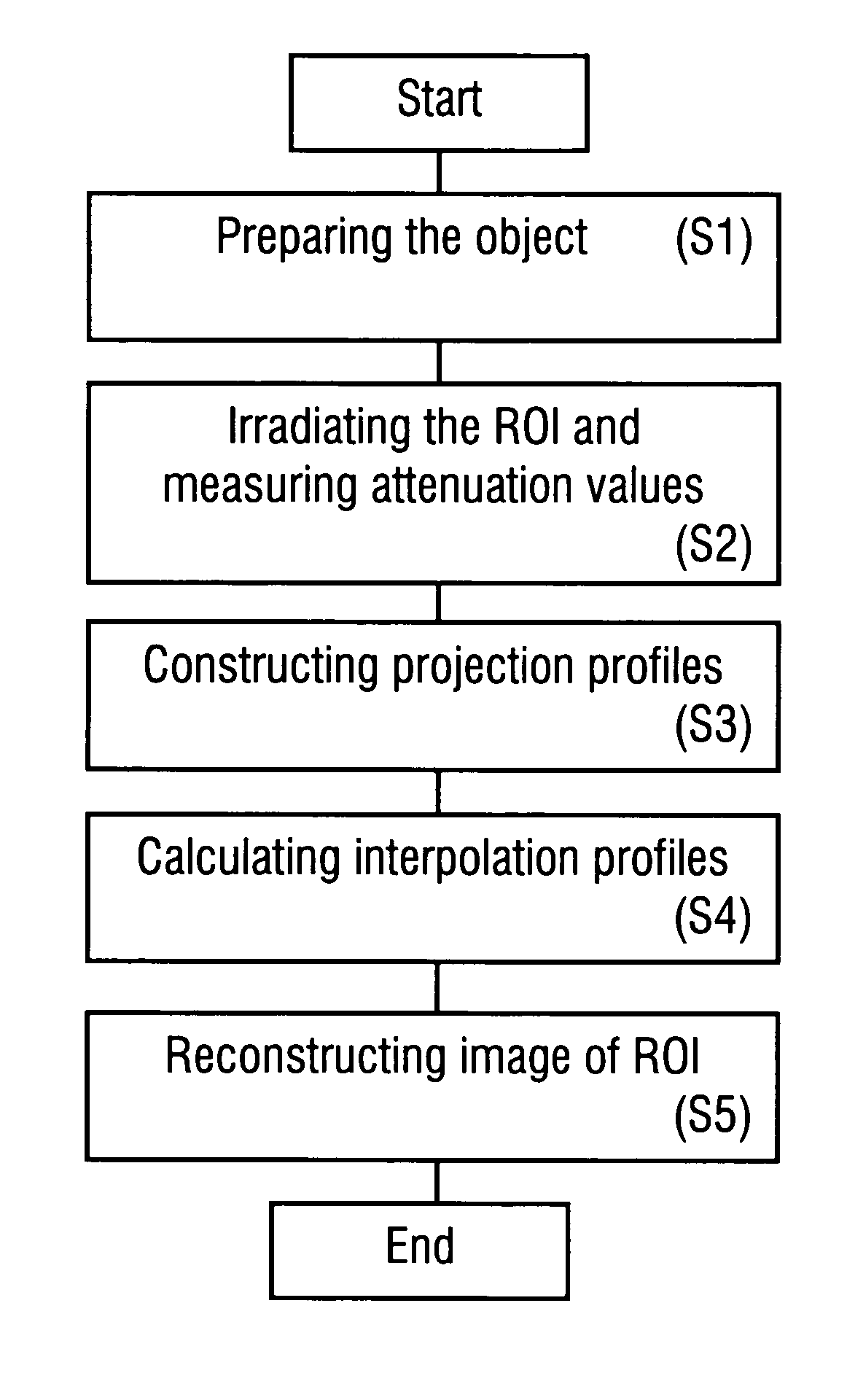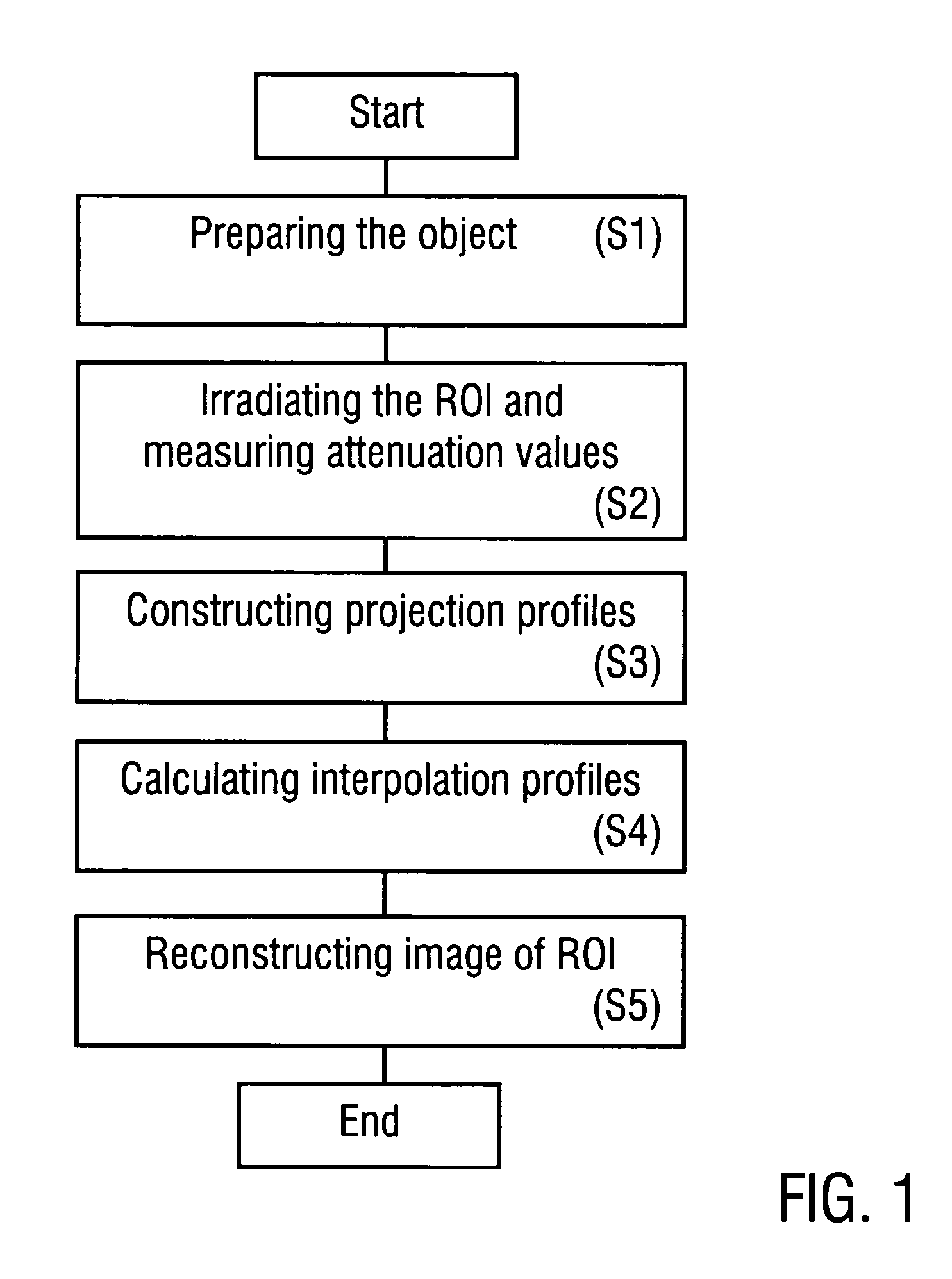Method of reconstructing an image function from Radon data
a radon and image function technology, applied in the field of reconstructing an image function from radon data, can solve the problems of inability to avoid disadvantages, errors and artifacts which have a tendency to increase, and iteration leads to extremely long calculation times, so as to improve imaging resolution and increase the range of applications
- Summary
- Abstract
- Description
- Claims
- Application Information
AI Technical Summary
Benefits of technology
Problems solved by technology
Method used
Image
Examples
Embodiment Construction
[0035]The invention is described in the following with reference to the preferred application in computer tomography. It is emphasized that the invention can be implemented in an analogous way with the application of other types of energy input beams (like e.g. neutrons or light, e.g. in the VIS or IR range). Furthermore, the following description of the preferred embodiments mainly refers to the principles of constructing interpolation profiles, including data collection and data processing. Details of the structure and operation of CT devices used for implementing the invention are not described as long as they are known from conventional CT devices.
[0036]Furthermore, the invention is described in the following with reference to the preferred application of the OPED algorithm. The description of the OPED algorithm for image construction as described in EP 04031043.5 is introduced into the present specification by reference. If the image function is calculated using the conventiona...
PUM
 Login to View More
Login to View More Abstract
Description
Claims
Application Information
 Login to View More
Login to View More - R&D
- Intellectual Property
- Life Sciences
- Materials
- Tech Scout
- Unparalleled Data Quality
- Higher Quality Content
- 60% Fewer Hallucinations
Browse by: Latest US Patents, China's latest patents, Technical Efficacy Thesaurus, Application Domain, Technology Topic, Popular Technical Reports.
© 2025 PatSnap. All rights reserved.Legal|Privacy policy|Modern Slavery Act Transparency Statement|Sitemap|About US| Contact US: help@patsnap.com



